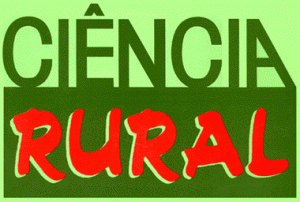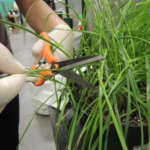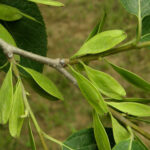By Rosa Cristina Prestes Dornelles, Professor, Department of Sciences and Food Technology, Federal University of Santa Maria (UFSM), Santa Maria, RS, Brazil
The article “Enzymatic hydrolysis (pepsin) assisted by ultrasound in the functional Properties of hydrolyzates from different collagens”, published in Ciência Rural (vol. 48, no. 3), analyzed the degree of hydrolysis, antioxidant activity (DPPH) and antimicrobial activity (MIC) of different samples of collagen powder sand fiber. When comparing the treatments, they realized that the treatment that allowed the highest antioxidant activity for the fiber sample was the use of 4% enzyme and concomitant ultrasound (40.7%), leading to a degree of hydrolysis of 21.7%. Another result showed that the higher degree of hydrolysis of the samples did not always result in a higher antioxidant activity. The hydrolyzates showed inhibitory capacity against gram-negative bacteria Salmonella choleraesuis and gram-positive bacteria Staphylococcus aureus.
The collagens used as the samples come from by-products of the slaughter of cattle. In this sense, the enzymatic hydrolysis of collagen can help add value to these animal wastes (LI, et al., 2007), according to researcher Rosa Dornelles. “The bioactive peptides obtained in these animal by-products exert certain biological activities, including antimicrobial, antioxidant and anti hypertensive activity, when released by a chemical or enzymatic hydrolysis process” (BERNARDINI, et al., 2011).
In practice, the use of concomitant ultrasound to the hydrolysis process can be applied to obtain peptides for parenteral diets, media enrichment or food supplementation, or even to obtain amino acids (YU, et al., 2014). Rosa Dornelles emphasizes that this research has advanced a great deal by showing the differences between the types of collagen by-products (gelatin, fiber and hydrolyzed collagen) and by analyzing the effects of enzymatic and ultrasonic assisted hydrolysis on the functional properties of protein hydrolysates, aspects little explored by other studies. The research opens space for future investigations to be launched in this field that has not yet been studied.
References
BERNARDINI, R.D., et al. Antioxidant and antimicrobial peptidic hydrolysates from muscle protein sources and by-products. Food Chemistry [online]. 2011, vol. 124, no. 4, pp. 1296-1307, ISSN: 0308-8146 [viewed 3 July 2018]. DOI: 10.1016/j.foodchem.2010.07.004. Available from: https://www.researchgate.net/publication/229408020_Antioxidant_and_antimicrobial_peptidic
_hydrolysates_from_muscle_protein_sources_and_by-products
LI, B., et al. Isolation and identification of antioxidative peptides from porcine collagen hydrolysate by consecutive chromatography and eletrospray ionization-mass spectrometry. Food Chemistry [online]. 2007, vol. 102, no. 4, pp. 1135-1143, ISSN: 0308-8146 [viewed 3 July 2018]. DOI: 10.1016/j.foodchem.2006.07.002. Available from: https://www.researchgate.net/publication/223721378_Isolation_and_identification_of_antioxidative
_peptides_from_porcine_collagen_hydrolysate_by_consecutive_chromatography_and_
electrospray_ioniation-mass_spectrometry
YU, Z.L., et al. Effect of ultrasound on the activity and conformation of a-amylase, papain and pepsin, Ultrasonics Sonochemistry [online]. 2014, vol. 21, no. 3, pp. 930-936, ISSN: 1350-4177 [viewed 3 July 2018]. DOI: 10.1016/j.ultsonch.2013.11.002. Available from: https://www.ncbi.nlm.nih.gov/pubmed/24291306
To read the article, access it
VIDAL, A.R., et al. Enzymatic hydrolysis (pepsin) assisted by ultrasound in the functional properties of hydrolyzates from different collagens. Cienc. Rural [online]. 2018, vol. 48, no. 3, e20170649, ISSN: 1678-4596 [viewed 3 July 2018]. DOI: 10.1590/0103-8478cr20170649. Available from: http://ref.scielo.org/qbq5v2
External link
Ciência Rural – CR: <http://www.scielo.br/cr>
Como citar este post [ISO 690/2010]:


















Recent Comments